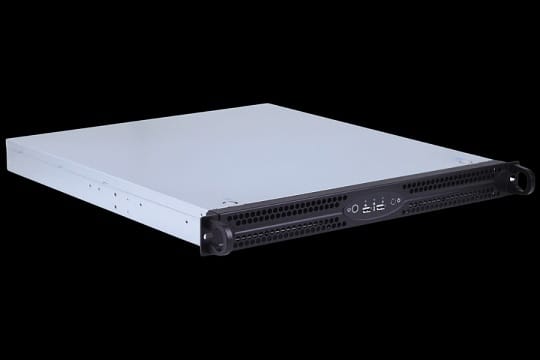Table of Contents
- Introduction to 1U Rackmount Servers
- Key Features of 1U Rackmount Servers
- Applications in Data Centers
- The Role of 1U Servers in Cloud Computing
- Energy Efficiency and Cost-Effectiveness
- Comparing 1U Servers to Other Formats
- Choosing the Right 1U Rackmount Server
Due to their compact design and scalability, 1U rackmount servers are highly versatile in modern IT infrastructure. These servers offer efficient space utilization, allowing businesses to maximize data center capacity without compromising performance. Their modularity and flexibility make them suitable for various applications, from cloud services to virtualization and data storage. By providing high-density solutions with improved power efficiency, 1U servers support businesses in meeting growing demands while optimizing operational costs and simplifying maintenance within dynamic, data-driven environments.
Introduction to 1U Rackmount Servers
In the ever-evolving landscape of IT infrastructure, 1U rackmount servers have carved out a niche as one of the most efficient solutions for modern businesses and organizations. These sleek units, measuring only 1.75 inches in height, provide a robust foundation for various computing needs without occupying excessive space. Models like the mini 1U server are notable in this domain, epitomizing the balance between power and compactness.
As data centers strive to increase their capacity and performance while reducing physical and operational footprints, 1U servers offer a flexible and dynamic solution. Their compact design conserves space and contributes to streamlined operations by delivering swift, scalable performance that meets the evolving demands of IT environments worldwide.
Key Features of 1U Rackmount Servers
The architecture of 1U rackmount servers is distinguished by its ability to pack powerful components into a limited space. These servers typically offer high-performance processors and substantial storage capabilities, essential for managing intensive workloads. Including hot-swappable components ensures minimal downtime during maintenance or upgrades, a critical consideration for businesses seeking uninterrupted operations.
Furthermore, 1U servers are engineered for adaptability. Their configurable nature allows them to be fine-tuned based on an organization’s specific requirements. This flexibility is paramount for enterprises engaged in unique computing scenarios, such as edge computing, where decentralized processing is necessary, or IoT applications, where data is gathered from a wide array of devices and requires immediate processing.
Applications in Data Centers
1U rackmount servers are a cornerstone within data centers, providing the backbone for many digital services. Their small footprint and powerful processing capabilities make them suitable for use in environments where space optimization is imperative. They efficiently handle tasks ranging from web hosting and database management to complex scientific computations.
By employing 1U servers, data centers can effectively manage increased workloads, thus optimizing their operational efficiency and reducing costs. Moreover, recent advancements in server technology continue to revolutionize the data center industry, underscoring the pivotal role of these compact giants in shaping the future of IT services.
The Role of 1U Servers in Cloud Computing
As cloud computing becomes integral to modern business operations, 1U rackmount servers emerge as critical players in hosting cloud services. Their ability to support high-density computing environments makes them ideal for these settings. 1U servers are designed to facilitate rapid application deployment, which is essential for the cloud infrastructure’s dynamic and scalable nature.
Their seamless integration with virtualization technologies allows businesses to efficiently orchestrate their cloud resources, enhancing scalability and resource allocation. This capability is crucial for maintaining the elasticity required in cloud environments, ensuring that services can be adjusted rapidly in response to fluctuating demands.
Energy Efficiency and Cost-Effectiveness
Another area where 1U servers excel is the drive towards sustainable technology. These servers are designed to operate with minimal power consumption, directly reducing energy costs. These savings are significant for organizations managing large data centers, offering a clear advantage in the push toward greener operations.
Beyond reducing operational costs, the compact nature of 1U servers can also lead to savings in real estate costs since they require less physical space. Their value is further enhanced by their longevity and the ease with which they can be upgraded. This makes them an attractive option for businesses aiming to align with environmental goals while pursuing financial prudence. Recent studies highlight the importance of energy-efficient technology, making 1U servers a timely choice for forward-thinking organizations.
Comparing 1U Servers to Other Formats
In the spectrum of server options, 1U units stand out for their unique space efficiency and performance combination. Compared to 2U servers, which offer expanded capacity and power, 1U servers provide a cost-effective alternative with sufficient capabilities for many applications. Blade servers, on the other hand, provide modular scaling but may require more significant infrastructural support.
Choosing the correct server format depends mainly on specific business needs, including budget constraints, space availability, and scalability requirements. Understanding the distinct advantages of each format is key to making informed decisions about IT infrastructure investments.
Choosing the Right 1U Rackmount Server
Choosing a 1U server should be based on several important considerations. These include assessing the required processing power, storage capacity, and network features to meet current and future organizational needs. Essential factors to consider are compatibility with current infrastructure and simplicity of integration.
Moreover, businesses should prioritize servers with built-in redundancy, robust security features, and comprehensive remote management capabilities. Such features not only fulfill present operational demands but also future-proof the investment as technology and business requirements continue to evolve.
In conclusion, 1U rackmount servers offer unmatched flexibility in modern IT infrastructures, delivering high performance within a compact design. Their scalability, efficiency, and ease of maintenance make them ideal for businesses looking to optimize space and resources. These servers adapt to various needs, whether deployed for cloud computing, virtualization, or data storage. As technology advances, their role in supporting dynamic workloads and future-proofing IT environments will continue to grow, ensuring their relevance in evolving infrastructures.

